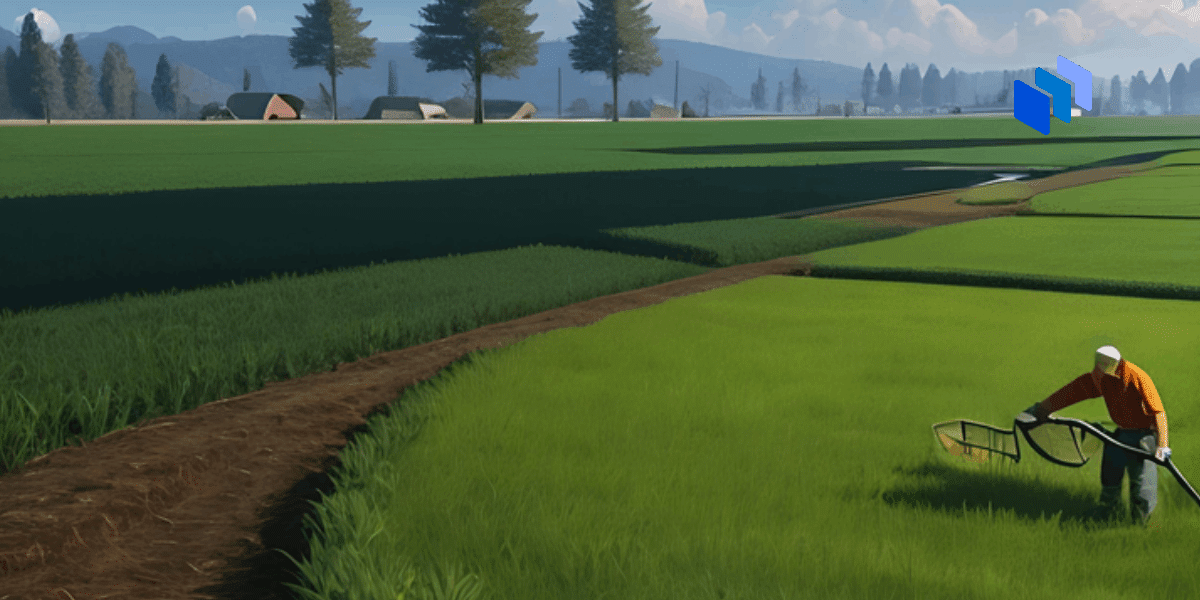The transition to Farming 2.0 signifies a profound change in agricultural practices driven by the need for increased efficiency, sustainability, and food security.
With challenges of a growing global population and escalating environmental concerns, there’s a need to consider where our food supply will come from in the future.
Farming 2.0 integrates technology and innovation to reimagine traditional farming methods and paves the way for a more productive and resilient agricultural framework.
So how do digital twins come into it?
Digital twins are virtual representations of physical objects, systems, or processes in the digital world. They entail creating realistic simulations of entire agricultural ecosystems within the context of today’s agriculture.
These virtual equivalents also cover a wide range of aspects, including ground conditions, weather patterns, machinery operation, and other measures in agriculture.
Digital twins are important because they bridge the gap between the physical and digital worlds. They enable farmers to make informed decisions, optimize their resource allocations, and reduce risks by providing timely insight and data analytics.
This technology plays a key role in leading toward precision agriculture, where tailored actions can be taken based on the information derived from these virtual representations.
IoT Devices, Sensors, and Data Collection
Internet of Things (IoT) devices and sensors lie at the core of digital twin creation. These technologies act as the sensory components of the digital twin, gathering massive data from the physical farming environment.
Soil moisture levels, temperature variations, crop health indicators, and machinery performance metrics are just a few examples of the data points collected by these sensors.
This data collection forms the building blocks of the agriculture digital twins. The data is transmitted to the digital twin, where algorithms and modeling techniques analyze and interpret the information. This synthesis creates a real-time reflection of the current state of the agricultural system.
Consequently, farmers gain a deep understanding of their operations, facilitating well-informed decision-making and timely interventions.
The convergence of IoT devices, sensors, and methods with the concept of digital twins offers farmers valuable intelligence in precision farming, predictive analytics, and resource optimization.
Digital twins in agriculture consist of interconnected components that redefine farming practices:
- Crop Model Component
Crop models are virtual simulations that mirror plant growth and behavior. They predict growth patterns by integrating soil, weather, and nutrient data. This aids in decision-making regarding planting, irrigation, and harvesting, enhancing yield and optimizing resource allocation.
- Soil Simulation Component
Soil simulations replicate soil properties, aiding in nutrient and water management. They optimize fertilization and irrigation by tailoring strategies to specific soil types.
This minimizes waste, promotes soil health, and ensures sustainable crop growth.
- Climate Emulator
Climate emulation virtually represents weather conditions.
Integrating real-time and historical data helps predict crop responses to climate variations. This enables farmers to take adaptive measures, reducing weather-related risks and enhancing crop resilience.
- Machinery Replication
Machinery replication simulates equipment functions. Utilizing data on performance and operations optimizes machinery utilization, reduces downtime, and boosts efficiency. It also allows for testing strategies without impacting physical equipment.
Putting The Field Together
A virtualized farm can drive data-driven decision-making for farmers, but the possibilities extend further.
Predictive capabilities come in by combining historical and real-time data to allow, for instance, the ability to forecast potential issues like disease outbreaks or nutrient deficiencies before they escalate.
Early detection enables timely interventions, maintains crop health, and enhances productivity.
In controlled settings like indoor farming and greenhouses, digital twins excel with detailed data for precise analysis. In the field, digital twins can also be extended to livestock management, optimizing agriculture supply chains, monitoring soil health, conserving biodiversity, and managing pests and diseases, collectively redefining the landscape of modern agriculture.
Collaborative platforms can also facilitate collective insights and knowledge sharing among farmers
However, given the sensitive nature of agricultural data, ensuring data security and privacy is paramount. These concerns are addressed by employing robust encryption, access controls, and adherence to data protection regulations.
Moreover, standardized protocols, IoT integration, and middleware solutions need to be utilized to achieve seamless integration of physical and digital systems.
Equipping farmers with the ability to interpret complex data also involves training programs, user-friendly interfaces, and data visualization tools.
Additionally, scalability and customization are essential in adapting digital twin technology to diverse farm sizes and types.
The Bottom Line
Gone are the days when farming relies solely on a steady eye, a strong arm, and choosing between tractors and oxen.
Using IoT and software, a farmer can keep a digital eye on his digital — but twinned — farm and try out scenarios or change variables.
The field will only advance, so to speak, as software becomes more intelligent, sensors become more nuanced, and platforms allow more collaborations and ways of monitoring.
With that, benefits can be unlocked around optimal yield, pest reduction, crop rotation, predictions, and collaboration.
Naturally farming is something that will always happen in the real world. But a digital assist can go a long way.








